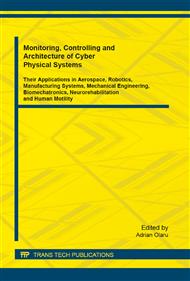p.3
p.11
p.17
p.23
p.30
p.37
p.43
p.53
Experimental Research Regarding the Development of Ecological CuSnP Powder
Abstract:
The paper presents research made to achieve environmental powder precursors from a CuSnP alloy, used in the manufacturing process of brazing materials, such as coated rods. The innovation of the paper consists in the elemental participation of the components in the new alloys, procedure that takes place in the alloying process, through coat conditions of the addition materials and by simultaneous obtaining the new precursors that fulfill high friability and deoxidation conditions of the participants in the brazing process. Developing the copper alloy batches is conditioned by a good protection to oxidation and gas absorption from the melting oven atmosphere. In order to protect the melt from the above mentioned phenomena’s we developed a slagging flux, boron-cryolithe type, which has melting proprieties below those of the copper phosphorus alloy, approx. 700°C. The load calculation was made based on the technical characteristics of the industrial base materials that were used, taking into account the loss coefficient of 5%. The melting, casting and cooling of the samples, dimensioned so they will be friable, was accomplished through classic procedures. The grinding of the sample, including the moistening thermic treatments, was achieved by experimental research, followed by calculations, based on the criteria of maximum yield for grinding. Estimating the sample friability, in the preliminary phase of the experimental determinations, was needed in order to restrain the testing domain, through structural and hardness analyses. The chemical composition of the samples was spectral determined on the copper and copper phosphorus programs.
Info:
Periodical:
Pages:
23-29
Citation:
Online since:
October 2014
Keywords:
Price:
Сopyright:
© 2014 Trans Tech Publications Ltd. All Rights Reserved
Share:
Citation:


